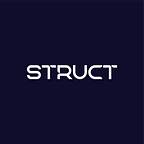Structured for Success: Unleashing the Potential of DeFi with Avalanche
--
Twin Visions
Bringing Structured Products to DeFi — one asset-class at a time — is no trivial task. The overarching vision of the Avalabs team is to tokenize all assets. At Struct, we cannot think of a more compatible vision that runs parallel to our own and it was our meeting with the Avalabs Team that further solidified this inclination.
Building on Avalanche required the synchronicity of multiple factors, including technology, community, sustainability, vision, people, composability, and TVL — each forming a piece of the mosaic needed to cement our decision to launch on this chain.
The leadership of Ava Labs, under the guidance of Emin Gun Sirer and John Wu, was a crucial factor in our decision. These leaders are not only highly intelligent and charismatic, but also thought leaders in the industry. Our personal discussions with John Nahas and Luigi D’Onorio, two key figures in the Avalanche community, further consolidated our belief in the project. The opportunity to meet these individuals in person at the Avalanche Summit in Barcelona was an exceptional experience that gave us a deeper understanding of the vision, leadership, and energy of the team behind Avalanche. Their passion for the project is truly unmatched. However, their infectious passion alone was not the final tipping point toward our decision to deploy on Avalanche: it was what Subnets allowed us to unlock for DeFi.
Blockchains that can Follow Protocols
The standard L1 approach has been to partition computational power and to apply a broad set of rules to all the dAPPs above it. Avalanche diverges from this train of thought by granting protocols the ability to build their own individual blockchain(s) on avalanche — each with its own customizable set of rules and parameters. With standard L1 technology, a protocol functionally acts as a subsection of a blockchain. On Avalanche, blockchains can functionally become subsections of protocols as a single protocol now has the ability to build multiple blockchains (or subnets) with different rules to meet a more diverse set of needs. This approach exceeds what can be possible by merely partitioning a single blockchain.
So what exactly can you configure within an Avalanche Subnet?
Here are a few examples:
1. Gas Token
Do you want to use $USDC or $ETH as the gas token for your Avalanche subnet? Or would you prefer using your native protocol token as gas instead?
You can do all of the above by building a different subnet for each.
2. Virtual Machine
Do you want to code a portion of your protocol in Solidity to be EVM-compatible — while coding other apps in your ecosystem using rust?
You can create an EVM-compatible subnet that integrates with Polygon, Arbitrum and Optimism while creating a second subnet using Rust that works alongside Near, Aptos and Sui — both subnets being under the hood of a single protocol!
3. Speed
Okay, you can’t really choose “speed” as a configurable setting, but subnets do allow for isolated performance that is unaffected by any congestion going on in the Avalanche mainnet. No exorbitant gas fees or network outages for you. No more NFT mints shutting your project down due to chain-congestion.
Other subnet parameters include choosing your own consensus mechanism, KYC requirements, privacy levels and even how many blockchains you’d like to use in your subnet.
It’s important to note that although each subnet is isolated in performance — they are not isolated in composability. Subnets are now freely able to communicate and send tokens back and forth from one another easily courtesy of the recent Avalanche Warp Messaging (AWM) launched in December of 2022. To oversimplify, AWM gives otherwise completely unrelated subnets the ability to interface with each other. Your own custom-made subnet can now access Chainlink Oracle Feeds without having to program full integration and you can now cross-promote with other subnets by easily bridging tokens and NFTs back and forth between different subnets.
How exactly does this facilitate the deployment of Interest Rate Derivatives and Structured Products?
Subnets & Structured products
Structured Products are baskets of different assets (crypto or otherwise) that are used together as a single unit (or vault), despite the fact that each component is governed by its own individual set of rules. Perpetuals don’t require epochs, but Options do. Neither requires (or enable) Fixed Rate Returns, but Interest Rate Swaps do.
Subnets allow blockchains with different rulesets to be interoperable together.
Can this same design logic then be applied to Crypto Structured Products?
AWM gives every subnet a shared language, and Structured Products are essentially different derivatives that require a shared language to work together. Avalanche’s subnet architecture naturally lends itself to the possibility of building a different subnet to accompany the onboarding of different DeFi asset classes. The first of many derivatives we are introducing in our suite of products are Interest Rate Products. In light of this, future Struct primitives may require the construction of their own specialized subnets to address bespoke needs from institutional investors. However, the most valuable advantage is simply leaving the door open in development because the option to deploy different subnets is always at our fingertips. Bar none, the flexibility of Subnet architecture means that no other L1 allows for as many product iterations as Avalanche does, and we’re a team that loves to test for success!
At this point, there was mutual recognition between both the Struct and AvaLabs team towards the efficacy of subnets in bringing Structured Products to DeFi. But how would we proceed to transform this lofty idea into an actual, running product?
We needed competent and able partners… and we found the best ones.
In the next article, we reveal all of this in the next part of our journey! If you want to know more about Struct and get involved, please join our community on Twitter and Discord.
